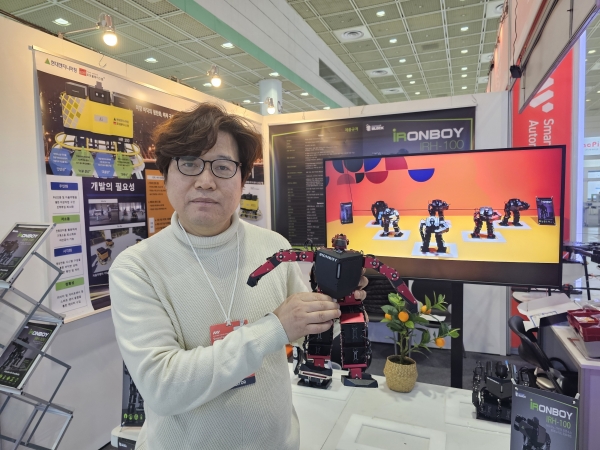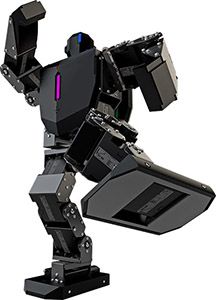Robotics engineering is one of the fastest-growing fields in the tech industry, with wider uses of automatic machines and their combination with artificial intelligence. Predictions from recent reports say that the professional engineering market for robotics will increase by 6.4 per cent from 2016 to 2026. There was also a 2018 survey stating that more than half of the people believe that robots will perform most human activities within three decades. The demand to learn how to build a robot seems to grow significantly as the tech industry seeks more robotics engineers. For those eyeing a career as a robot builder, ROBOBLOCK, a Korean robotics company based in Bucheon, Gyeonggi Province, has been marketing robots for this profession.
Robots for learning: IRON Boy and Maro Pava
ROBOBLOCK is a venture company that makes robots for education, humanoids, build-a-robot kits, and robot-controlling software, founded in 1997. The company kicked off with a vision to make robot learning easier for beginners, and to introduce more affordable commercial robots, unlike existing robots like Sony’s AIBO or Honda’s humanoid series.
IRON Boy is a product that is in line with the company’s goals. It is a dancing humanoid robot capable of following prompts made on Arduino-based coding programs. Users can order the robot as they want, like moving their head around or walking towards a certain direction.

“It is first-of-its-kind, an Arduino-based humanoid robot made for education,” an official of ROBOBLOCK told 4i Magazine during the 2024 Smart Factory+Automation World convention. “Users can learn not only how to write computer programming language through this product, but also basics of operating a robot.”
ROBOBLOCK
IRON Boy is delivered to users as assembled, allowing them to play with it without technical difficulties from the beginning. To improve its compatibility with Arduino, the robot comes with IRduino, a circuit board designed to be attached to the main control board. The company added that the robot could be used with any other type of Arduino board available on the market.
“We also keep an open-source library, giving more options for users when exploring diverse robotics-assisted tasks,” the official said. Running on open-source, IRON Boy can be helpful for a wide age range of users, from primary schoolers who are starting to learn what coding is to university students who want to know more about the field of computer programming.
Another ROBOBLOCK product designed for user education is Maro Pava. This humanoid robot operates on high-level programming languages like Naver’s ENTRY, Scratch, and Python, aiming to improve users’ understanding of computer programming.
“Since the pandemic, companies have worked to establish a hyper-automated ecosystem as most of the interaction among people became digitalised,” Shin Dae-seop, CEO of ROBOBLOCK, was quoted as saying. “We will continue to pay our attention to research and development projects related to smart factory constructions and form a network of like-minded developers to foster a user-centric robot industry.”

Learning programming language through robots in Asia
Making robots to improve users’ computational knowledge seems to have been a common theme for several other Asian institutions and companies since the early 2000s.
Most closely, Goyoung Robotics is located in Bucheon, the same as ROBOBLOCK. When it opened its business in 2009, it manufactured various humanoid robots for exhibitions, demonstrations, and computer programming education. It currently showcases a series of robot products at several exhibition institutes, including the Bucheon Robo Park.
In Japan, a research team at Shizuoka University conducted lessons about manufacturing and controlling robots and programming language Dolittle for junior high school students, with the assistance of robots, in 2006. From instructing them to make circuit boards by themselves to running automated cars in Dolittle, the research said that educating students about computational concepts with the help of robots can effectively teach IT, as it piques their interest.
When it comes to China, where more than 90 per cent of primary school children show their willingness to learn more about artificial intelligence, many media reports have highlighted the trend of educational robots deployed at public schools to develop the computational knowledge of students for the past few years.



